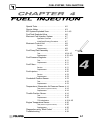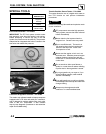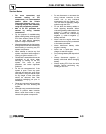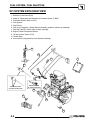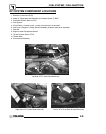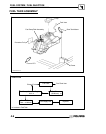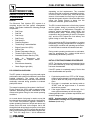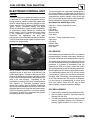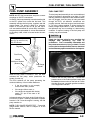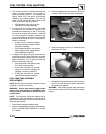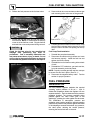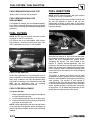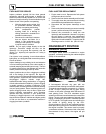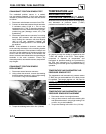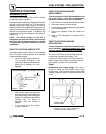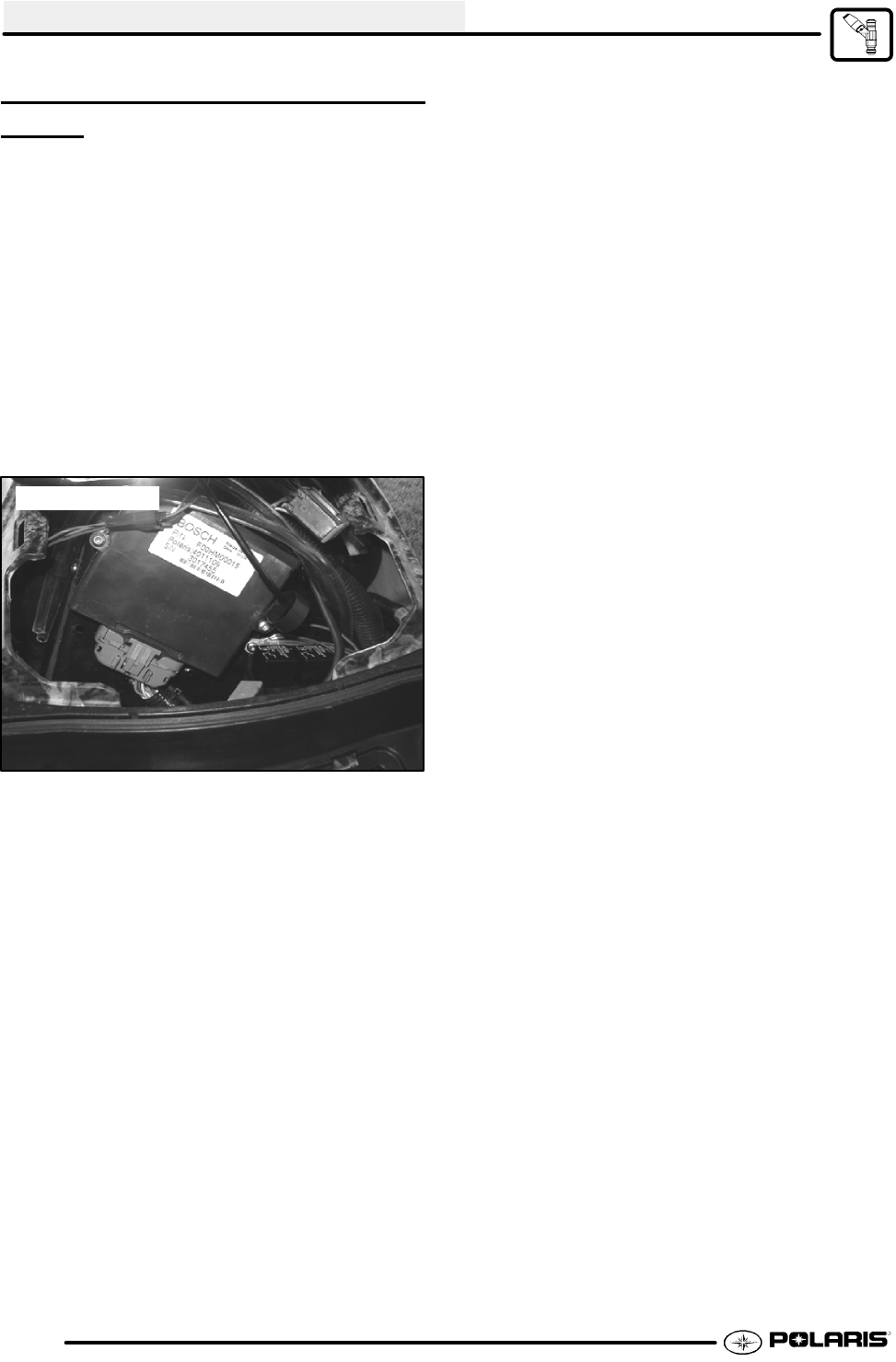
FUEL SYSTEM / FUEL INJECTION
4.8
ELECTRONIC CONTROL UNIT
(ECU)
The ECU is the brain or central processing computer
of the entire EFI fuel/ignition management system.
During operation, sensors continuously gather data
which is relayed through the wiring harness to input
circuits within the ECU. Signals to the ECU include:
ignition (on/off), crankshaft position and speed
(RPM), throttle position, engine coolant temperature,
air temperature, intake manifold air pressure and
battery voltage. The ECU compares the input signals
to the programmed maps in its memory and
determines the appropriate fuel and spark
requirements for the immediate operating conditions.
The ECU then sends output signals to set the injector
duration and ignition timing.
700 EFI Shown
During operation, the ECU continually performs a
diagnostic check of itself, each of the sensors, and
system performance. If a fault is detected, the ECU
turns on the Malfunction Indicator Light (MIL) (Check
Engine Light) on the speedometer and stores the fault
code in its fault memory. Depending on the
significance or severity of the fault, normal operation
may continue, or ”Fail--Safe” operation (slowed
speed, richer running) may be initiated. A technician
can access the stored fault code using a ”blink code”
diagnosis flashed out through the Instrument cluster.
The ECU requires a minimum of 7.0 volts to operate.
The memory in the ECU is operational the moment
the battery cables are connected.
To prevent engine over--speed and possible failure, a
rev--limiting feature is programmed into the ECU. If
the maximum RPM limit (6500) is exceeded, the ECU
suppresses the injection signals, cutting off the fuel
flow. This process repeats it self in rapid succession,
limiting operation to the preset maximum.
Sportsman 700 / 800 EFI Rpm Limit:
Hard limit -- Injector Suppression occurs
High: 6500
Low: 6500
Neutral: 6500
Reverse: 6500
Park: 6500
Soft limit -- Timing Suppression occurs
High: None
Low: 6300
Neutral: 6300
Reverse: 6300
Park: 6300
ECU SERVICE
Never attempt to disassemble the ECU. It is sealed to
prevent damage to internal components. Warranty is
void if the case is opened or tampered with in any way.
All operating and control functions within the ECU are
pre--set. No internal servicing or readjustment may be
performed. If a problem is encountered, and you
determine the ECU to be faulty, contact the Polaris
Service Department for specific handling instructions.
Do not replace the ECU without factory authorization.
The relationship between the ECU and the throttle
position sensor (TPS) is very critical to proper system
operation. If the TPS isfaulty, or the mounting position
of the TPS is altered, the TPS must be re--initialized.
For the purpose of troubleshooting, a known--good
ECU from another Polaris ATV EFI may be used
without system or engine component damage.
ECU REPLACEMENT
1. Remove the 2 retaining screws holding the ECU.
2. With the Ignition turned off, disconnect the wire
harness from the ECU.
3. To install, reverse the procedures, reapply a small
amount of dielectric grease to the connector if
desired. Tighten screws to 10 in. lbs (1.1 Nm).




